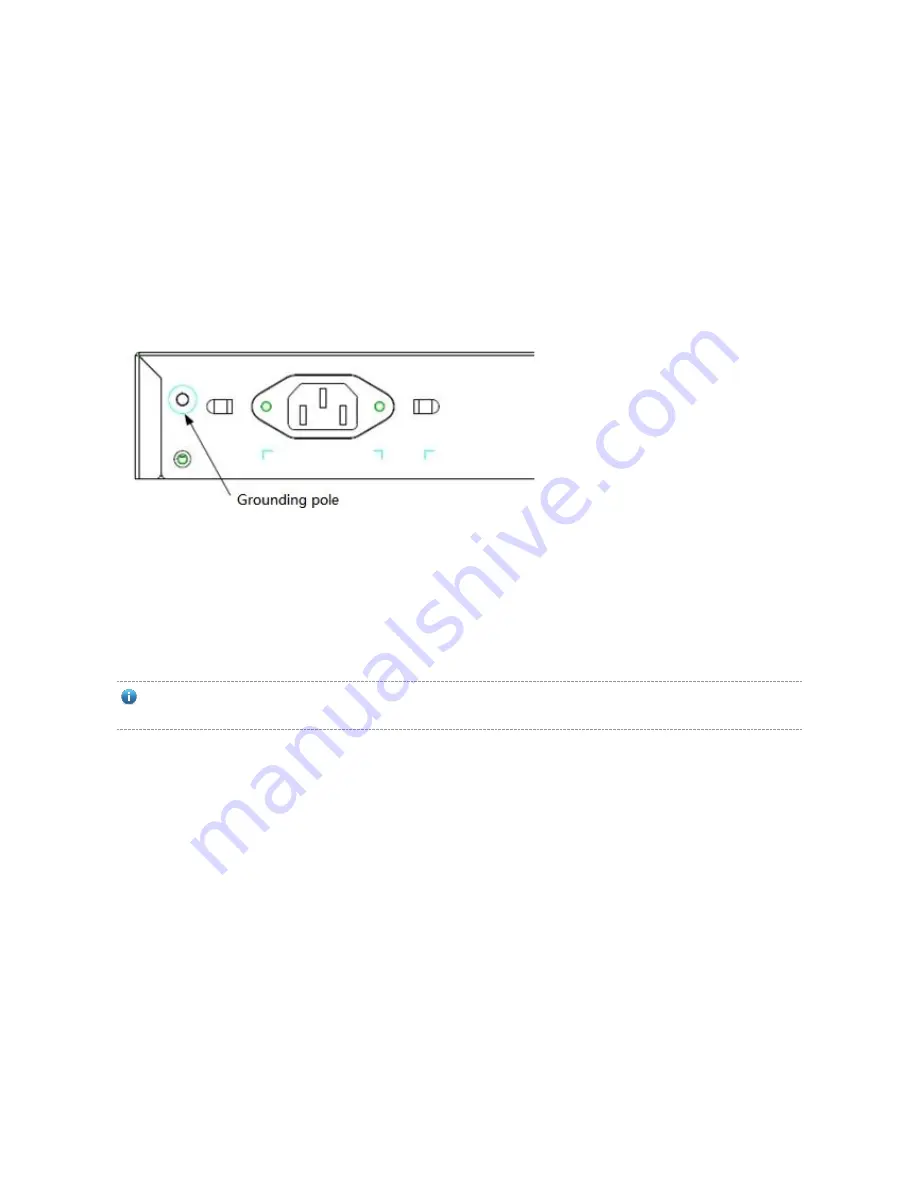
The lightning protection system of a facility is an independent system that consists of the lightning rod, download
conductor and the connector to the grounding system, which usually shares the power reference ground and yellow/green
safety cable ground. The lightning discharge ground is for the facility only, irrelevant to the equipment.
EMC Grounding
The grounding required for EMC design includes shielding ground, filter ground, noise and interference suppression, and
level reference. All the above constitute the comprehensive grounding requirements. The resistance of earth wires should
be less than 1 ohm. The RG-S2910XS-E series switch back plane is reserved with one grounding pole, as shown in
Figure 2-1.
Figure 2-1Grounding of RG-S2910XS-E
2.2.5 Lightning Resistance
When the AC power cable is imported outdoors and directly connected to the power port of the RG-S2910XS-E series
switch, lightning line bank should be adopted to prevent the switch from being hit by lightning shocks. Usage of the
lightning line bank: Connect the mains supply AC cable to the lightning line bank. Then, connect the switch to the lightning
line bank. This can help to prevent the current of high-voltage lightning from passing the switch directly through the mains
supply cable to a certain extent.
The lightning line banks are not provided and should be purchased by users as required.
For the usage of lightning line banks, refer to their related manuals.
2.2.6 EMI
Electro-Magnetic Interference (EMI), from either outside or inside the equipment or application system, affects the system
in the conductive ways such as capacitive coupling, inductive coupling, and electromagnetic radiation.
There are two types of electromagnetic interference: radiated interference and conducted interference, depending on the
type of the transmission path.
When the energy, often RF energy, from a component arrives at a sensitive component via the space, the energy is
known as radiated interference. The interference source can be either a part of the interfered system or a completely
electrically isolated unit. Conducted interference results from the electromagnetic wire or signal cable connection between
the source and the sensitive component, along which cable the interference conducts from one unit to another. Conducted
interference often affects the power supply of the equipment, but can be controlled by a filter. Radiated interference may
affect any signal path in the equipment and is difficult to shield.
For the AC power supply system TN, single-phase three-core power socket with protective earthing conductors (PE)
should be adopted to effectively filter out interference from the power grid through the filtering circuit.
















































